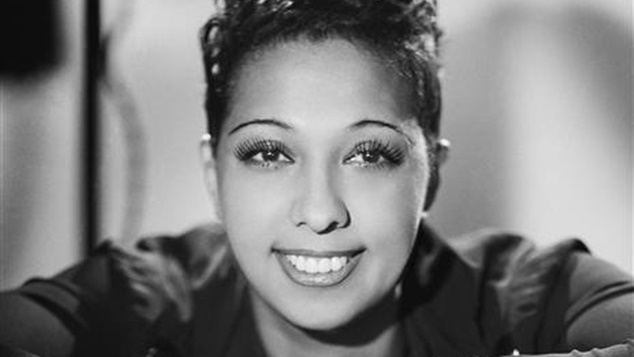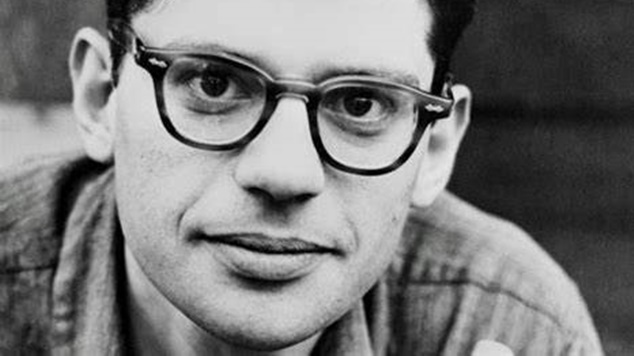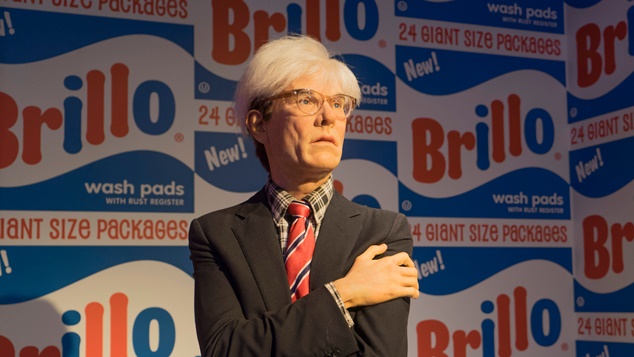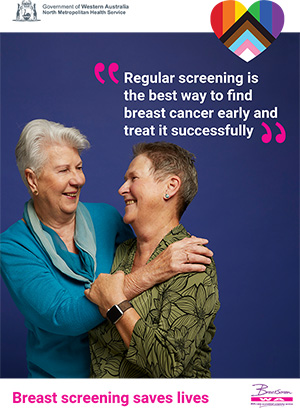Warhol was shot by writer Valerie Solonas
Artist Andy Warhol gained fame and acclaim in the 1960’s as part of the Pop-Art movement. He created his famous paintings of Campbell’s Soup Cans and portraits of icons such as Elvis Presley and Marilyn Monroe.
His studio space The Factory was a hotbed of creativity and he branched out into filmmaking and music. His surrounding community included people he dubbed ‘superstars’ including Nico, Joe Dallesandro, Edie Sedgwick, Viva, Ultra Violet, Holly Woodlawn and Candy Darling.
Also among the periphery of The Factory crowd was feminist writer Valerie Solonas. In 1967 she published the SCUM Manifesto, a separatist feminist work that argued for the elimination of men.
Solonas had originally trained in psychology but dropped out of graduate school to write her manifesto. She was open about being a lesbian despite the conservative climate of the 1950’s and even hosted a college radio show where she gave advice on how to combat men.
She met Warhol in 1967 and asked his to produce her play Up Your Ass. She gave Warhol her script. At the time police were regularly raiding Warhol’s studio and he reportedly thought the script from Solonas might be a plant because it was so pornographic. Warhol later told Solonas that he’d lost the script, but many in his circle believed he may have destroyed it. As compensation he paid her $25 to appear in his film I, a Man.
On June 3rd 1968, Solonas entered The Factory and shot Warhol and art critic and curator Mario Amaya. Amaya only had superficial wounds, but Warhol nearly died in the altercation. He was hit by one of the three bullets Solas fired at him, causing damage to his spleen, stomach, liver, lungs and esophagus.
Warhol was rushed to hospital where he underwent a five-hour operation to save his life. He suffered the effects of his injuries for the rest of his life and the assassination attempt deeply affected his life and subsequent work.
Solonas handed herself into police the following day and explained that she felt Warhol had too much of an effect on her life. She was diagnosed as having paranoid schizophrenia and was placed in the care of the Department of Corrections for three years.
After she was released from hospital Solas continued to stalk Warhol and others usually by telephone. She was arrested again in 1971 and was placed into institutions several times before fading into obscurity.
She was reportedly living on the streets of New York in the mid 1970’s before relocating to California. Solonas died of pneumonia at the Bristol Hotel in San Francisco in 1988 at the age of 52.
Warhol died the previous year aged 58. He passed away following medical treatment on his gallbladder. At the time of his death the surgery was described as routine, but a review of his case decades later determined it was much riskier than originally anticipated, one of the contributing factors being his previous injuries from the 1968 shooting.
The shooting incident was dramatised in the 1996 film I Shot Andy Warhol which saw actor Lili Taylor garner acclaim for portrayal of Solonas, while Warhol was played by Jared Harris. Director Mary Harron asked to use songs by The Velvet Underground in the film but was knocked back by Lou Reed who was concerned the film would glorify Solonas.
Lou Reed and John Cale included a song about Solonas on Songs for Drella their 1990 concept album about Warhol. The track I Believe saw Reed singing “”I believe life’s serious enough for retribution… I believe being sick is no excuse. And I believe I would’ve pulled the switch on her myself.”
A fictionalised version of Solonas also appears in the TV series American Horror Story: Cult. Writer and actor Lena Dunham took on the role.
In 1999 the script of Up Your Ass that was given to Warhol decades earlier was rediscovered. It was found in a case of lighting equipment owned by Factory identity Billy Name. It was staged in 2000 as a musical by a San Francisco performance group.

Josephine Baker was so much more than a performer with bananas
The iconic image of Josephine Baker is of her performing in a Paris club in the 1920’s wearing only a skirt made of artificial bananas and a necklace. Her 1927 performance at the Folles Bergère in the revue Un vent de folie encapsulated the new found sexual freedom of the roaring 20’s and the jazz age.
Baker was much more than a cabaret performer, During her life Baker was a celebrated singer, a civil rights activist and a during World War II a French Resistance agent.
Born on this day in St Louis, Missouri in 1906, her birth name was Josephine McDonald. Growing up in a poverty stricken area filled with rooming houses, brothels and apartments without interior plumbing, she often went hungry.
Dropping out of school at 12, she was married at just 13 to her first husband. Divorced a year later, she was married a second time in 1921 when she was just 15, she would keep her married name for the remainder of her life, but was divorced a second time six years later.
Finding success as a comic dancer in St Louis, she later moved to New York and found further success in Broadway revues. In 1925 she sailed to Paris and became a theatrical sensation. Alongside her acclaimed number featuring the banana skirt, she also appeared on stage with her pet cheetah who wore a diamond collar.
In Paris Baker was friends with writer Ernest Hemmingway, posed a a model for Picasso and was a contemporary of playwright Jean Cocteau. Soon she began to travel to other countries to perform, but her appearances were often opposed by churches who deemed her performances immoral.
In the 1930’s she starred in silent film and started recording music. She returned to America to perform on Broadway in the the 1936 show Ziegfeld’s Follies but was ravaged by critics. When she returned to France she married industrialist Jean Leon, renounced her American citizenship and became a French citizen.
During World War II Baker worked with the French Resistance, passing on information about German troop movements that she overheard at parties. After the war she was made a Chevalier of the Legion d’honneur by French President Chales de Gaulle.
In the 1950’s she returned to the USA for a successful nightclub tour, where she refused to perform to segregated audiences. In turn she was accused of having communist sympathies and her working visa was rebuked. She would not perform in the USA for another decade.
In the 1960’s she added her voice to the civil rights movement and joined Dr Martin Luther King at his historic March on Washington in 1963, where she was the only women to deliver a speech. Notably saying;
“I have walked into the palaces of kings and queens and into the houses of presidents. And much more. But I could not walk into a hotel in America and get a cup of coffee, and that made me mad. And when I get mad, you know that I open my big mouth. And then look out, ’cause when Josephine opens her mouth, they hear it all over the world ..”
Baker continued performing through out the 1960’s and 70’s. In 1975 she starred in a new revue which looked back on her 50 years as a performer. The show was a massive success and saw an opening night audience that included Shirley Bassey, Mick Jagger, Sophia Loren, Diana Ross and Liza Minelli.
Four days after the opening Baker was found unconscious in her room surrounded by glowing newspaper reviews. She had suffered a cerebral hemorrhage, she died aged 68 on 12th April.
Married four times, her third marriage to Jean Leon last three years, and in 1947 she married fourth husband French composer Jo Boullion. They divorced in 1961. Baker was bisexual and had many relationships with women throughout her life. Blues singer Clara Smith, novelist Georges Simenon, jazz singer Ada ‘Bricktop’ Smith and novelist Collette were among her lovers. It’s also suggested that she may have had a relationship with painter Frida Kahlo.
Baker had ten adopted children, she wanted to show that people from different backgrounds could love together, and adopted children of different backgrounds, describing them as her rainbow tribe.
In August 2019 Josephine Baker was one of the honourees of the Rainbow Walk of Fame in San Francisco’s Castro district. Over the years Baker has been an inspiration to many black female performers. Shirley Bassey has cited her as a major influence, Diana Ross has paid tribute to her in shows, Beyonce has portrayed her on stage many times, and many miniseries, films and plays have been created about Baker’s life.

Poet Allen Ginsberg was born on this day in 1926
Allen Ginsberg was one of the most well-known poets of the 20th century. He was close friends with authors Jack Kerouac and William S Burroughs, together they formed the core of the Beat Generation literary movement.
Ginsberg’s best known work is Howl, which was published in 1956. The poems sees Ginsberg denounce the destructive forces of capitalism and conformity in the USA. In the work he is also overt about his homosexuality and his relationships with several men, including long term partner Peter Orlovsky. The book was challenged by authorities and became the centre of an obscenity trial in 1957. At the time anal sex was illegal in every state of the USA.
Ginsberg continued writing throughout his life and was a visible supporter of many political protests and causes. He collaborated with many different people including Phillip Glass and Bob Dylan.
In 1996 he found a new generation of fans with the song Ballad of the Skeletons. The rock tune saw him teaming up with classical composer Glass and ex-Beatle Paul McCartney to create the tune. It got a lot of airplay on Australia’s youth station TripleJ, and scored the number 8 position on that year’s Hottest 100.
At the end of his life Ginsberg suffered from congestive heart failure, he died at his home on 5th March 1997. In the days leading up to his death he reportedly called everyone in his address book one at a time to say goodbye. He wrote his final poem a few days before he passed, it was called Things I’ll Not Do (Nostalgias).
At the time of Ginsberg’s death, he had been with partner Peter Orlovsky for 43 years, Orlovsky passed away in 2010.
Harry Potter actor Daniel Radcliffe portrayed Ginsberg in the 2013 film Kill Your Darlings.
OIP Staff
You can support our work by subscribing to our Patreon
or contributing to our GoFundMe campaign.








